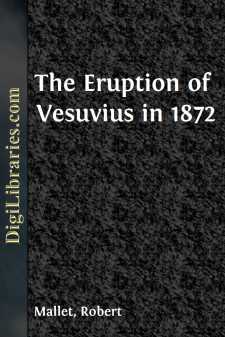Categories
- Antiques & Collectibles 13
- Architecture 36
- Art 48
- Bibles 22
- Biography & Autobiography 813
- Body, Mind & Spirit 142
- Business & Economics 28
- Children's Books 17
- Children's Fiction 14
- Computers 4
- Cooking 94
- Crafts & Hobbies 4
- Drama 346
- Education 46
- Family & Relationships 57
- Fiction 11829
- Games 19
- Gardening 17
- Health & Fitness 34
- History 1377
- House & Home 1
- Humor 147
- Juvenile Fiction 1873
- Juvenile Nonfiction 202
- Language Arts & Disciplines 88
- Law 16
- Literary Collections 686
- Literary Criticism 179
- Mathematics 13
- Medical 41
- Music 40
- Nature 179
- Non-Classifiable 1768
- Performing Arts 7
- Periodicals 1453
- Philosophy 64
- Photography 2
- Poetry 896
- Political Science 203
- Psychology 42
- Reference 154
- Religion 513
- Science 126
- Self-Help 84
- Social Science 81
- Sports & Recreation 34
- Study Aids 3
- Technology & Engineering 59
- Transportation 23
- Travel 463
- True Crime 29
The Eruption of Vesuvius in 1872
by: Robert Mallet
Description:
Excerpt
The publishers of this little volume, in requesting me to undertake a translation of the "Incendio Vesuviano," of Professor Palmieri, and to accompany it with some introductory remarks, have felt justified by the facts that Signor Palmieri's position as a physicist, the great advantages which his long residence in Naples as a Professor of the University, and for many years past Director of the Meteorological Observatory—established upon Vesuvius itself, prior to the expulsion of the late dynasty—have naturally caused much weight to attach to anything emanating from his pen in reference to that volcano.
Nearly forty memoirs on various branches of physics—chiefly electricity, magnetism and meteorology—produced since 1842, are to be found under Palmieri's name in the "Universal Catalogue of Scientific Papers of the Royal Society," and of these nine refer to Vesuvius, the earliest being entitled "Primi Studii Meteorologici fatti sul R. Osservatorio Vesuviano," published in 1853. He was also author, in conjunction with Professor A. Scacchi, of an elaborate report upon the Volcanic Region of Monte Vulture, and on the Earthquake (commonly called of Melfi) of 1851. These, however, by no means exhaust the stock of Palmieri's labours.
The following Memoir of Signor Palmieri on the eruption of Vesuvius in April of this year (1872), brief as it is, embraces two distinct subjects, viz., his narrative as an eye-witness of the actual events of the eruption as they occurred upon the cone and slopes of the mountain, and his observations as to pulses emanating from its interior, as indicated by his Seismograph, and as to the electric conditions of the overhanging cloud of smoke (so called) and ashes, as indicated by his bifilar electrometer, both established at the Observatory. The two last have but an indirect bearing upon Vulcanology. The narrative of the events of the eruption is characterised by exactness of observation and a sobriety of language—so widely different from the exaggerated style of sensational writing that is found in almost all such accounts—that I do the author no more than justice in thus expressing my view of its merits.
Nor should a special narration, such as this, become less important or suffer even in popular estimation by the fact that so recently my friend, Professor J. Phillips, has given to the world the best general account of Vesuvius, in its historical and some of its scientific aspects, which has yet appeared. That monograph—with its sparkling style, and scholarly digressions, as well as for its more direct merits—will, no doubt, become the manual for many a future visitor to the volcanic region of Naples; but it, like the following Memoir of Palmieri, and in common with almost every work that has appeared on the subject of Volcanoes, contains a good deal which, however interesting, and remotely related to Vulcanology, does not properly belong to the body of that branch of cosmical science, as I understand its nature and limits.
It tends but little, for example, to clear our views, or enlarge our knowledge of the vast mechanism in which the Volcano originates, and that by which its visible mass is formed, that we should ascertain the electric condition of the atmosphere above its eruptive cone, or into what crystallographic classes the mineral species found about it may be divided: it will help us but little to know Pliny's notions of how Pompeii was overwhelmed, or to re-engrave pictures, assumed to give the exact shape of the Vesuvian or other cone at different periods, or its precise altitude, which are ever varying, above the sea....


